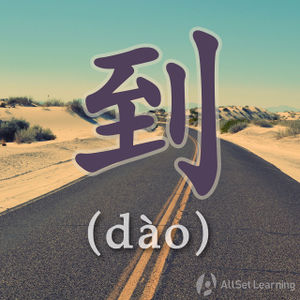Result complements "-dao" and "-jian"
-
Level
-
Similar to
-
Used for
-
Keywords
Structure
Result complements are a huge topic in Chinese grammar, but you can approach them in stages. The structure you come across the most is a verb with 到 (dào):
Subject + Verb + 到 + Object
What 到 does is indicate that the outcome of the verb is achieved - what its result is. Without a result complement, the sentence would describe only the action itself. To illustrate, 想 "to think" is the action of thinking, whereas 想到 "to think (of something)" is a the result of that process.
The complement 见 is very similar to 到, and it is used in the same way:
Subject + Verb + 见 + Object
However, 见 is generally only used after verbs involving sense, like 听 and 看, whereas 到 can be attached to a large variety of verbs.
Examples
- 听 到 了 吗?
- 你 看 见 那 个 人 了 吗?
- 我 买 到 了 一 些 水果。
- 小 时候 没 学过 乐器, 我 感到 很 遗憾。
- 你 的 手机 号码 里 怎么 有 那么 多 个 八?没 想 到 你 那么 迷信!
As in the last sentence, this structure can be negated using 没.
See also
Sources and further reading
Books
- Short-term Spoken Chinese: Threshold Vol. 2 (汉语口语入门篇下) (pp. 92) →buy
- Basic Patterns of Chinese Grammar (pp. 109) →buy



